kaki no tane
Kaki no Tane and More Types of Senbei
Thuy Fang
Posted on November 14, 2024
Share:

Senbei is a traditional rice cracker snack that has been loved by the people of Japan for generations. Although it was introduced to Japan from China, this food has become one of the cultural icons in Japanese cuisine, even for foreign visitors. So, let’s look at some of the most popular types of senbei, starting with kaki no tane!
What is kaki no tane?
Kaki no tane, often called kaki-pi, is a beloved Japanese snack made of rice crackers shaped like tiny persimmon seeds. This snack typically consists of two main parts: crescent-shaped rice crackers flavored with soy sauce and chili paired with roasted peanuts. The mix of savory, mildly spicy, and nutty flavors with a crunchy texture makes kaki no tane a perfect snack, especially with tea or beer.
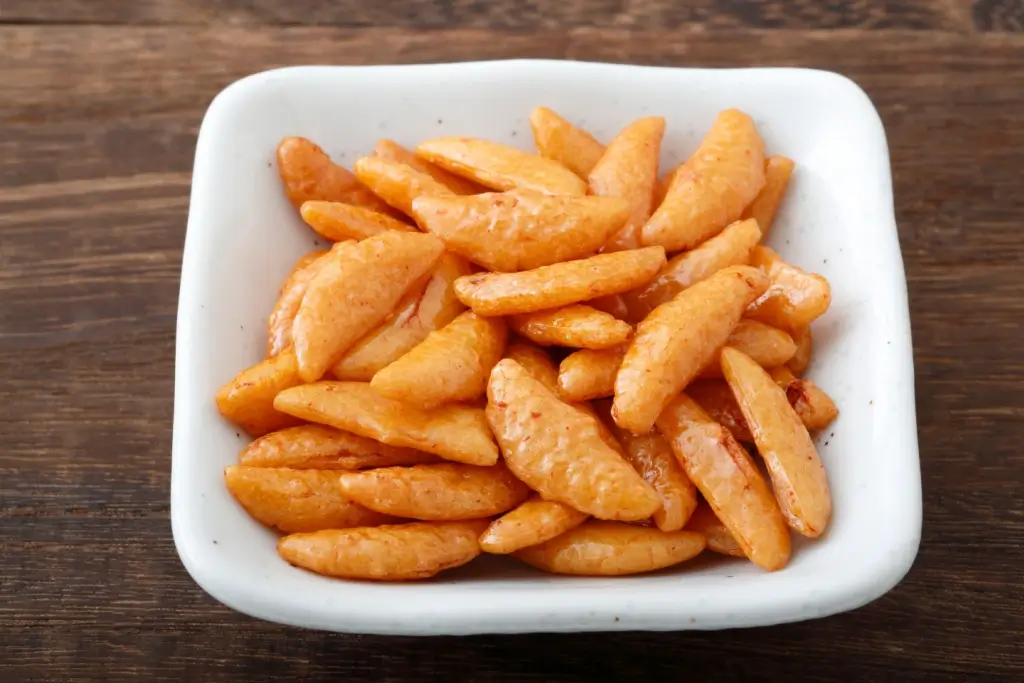
The history of kaki no tane dates back to the 1920s in Nagaoka City, Niigata Prefecture. Yosaburo Imai, the founder of Naniwaya Confectionery, accidentally created these crackers when his wife stepped on a mold, changing the round shape to a crescent. Imai sold them anyway, and customers loved the new shape. By 1925, Imai had officially introduced kaki no tane, and its popularity grew rapidly. Over time, companies like Kameda Seika started making their versions, adding new flavors and varieties to keep snack lovers interested.
Kaki no tane comes in various flavors, from classic soy sauce to wasabi, umeboshi (pickled Japanese plum), curry, and even chocolate-coated versions. Some regions in Japan even offer limited-edition flavors that showcase local ingredients. Moreover, it’s not just tasty but also reasonably healthy, providing energy-boosting carbs and some protein without being deep-fried!
Are you looking for great snacks like kaki no tane? Check out Sakuraco! Sakuraco delivers traditional Japanese snacks, teas, sweets, and snacks from local Japanese makers directly to your door so you can enjoy the latest sweets directly from Japan!
What other types of senbei are there to enjoy?
Ebi senbei
Ebi senbei is a shrimp-flavored cracker with a long and rich history in Japan. These delicious crackers originated as a way to preserve shrimp, turning them into a non-perishable snack. Eventually, they evolved into a tasty treat with a lovely crunch, loved by people of all ages. The makers blend shrimp and rice flour to create the senbei, giving them a strong shrimp flavor and a crisp texture that’s both satisfying and light.
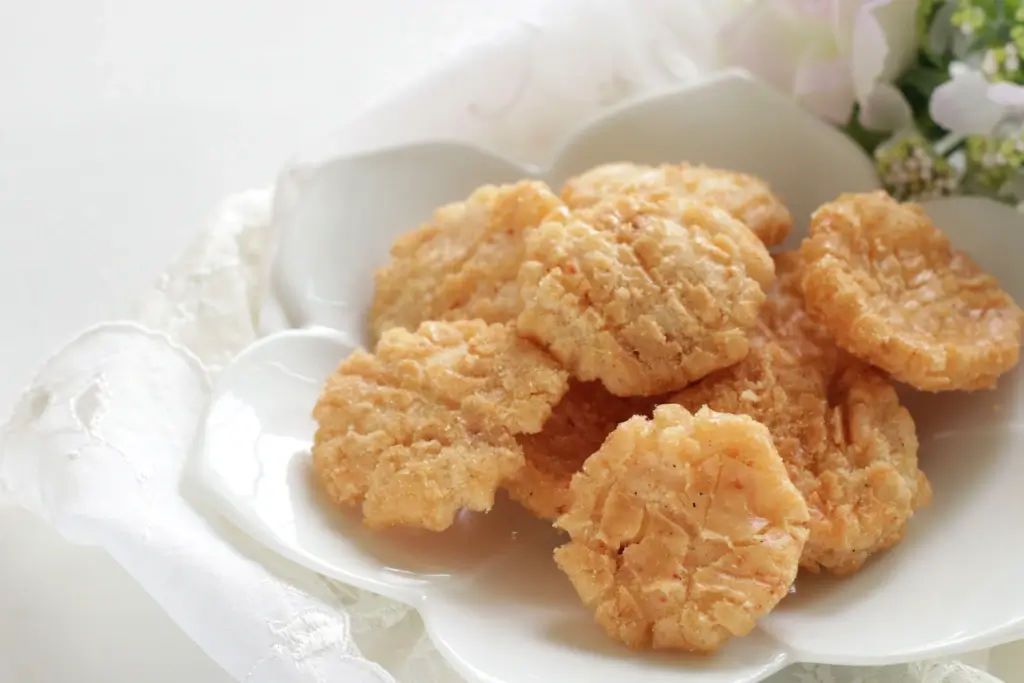
It’s a famous snack in Nagoya, where it is commonly sold as a souvenir. There are many types, from classic shrimp-flavored crackers to bold varieties such as mayonnaise or garlic-flavored ones. Some ebi senbei feature shrimp mixed directly into the cracker dough, while others add shrimp on top or use shrimp pieces within the cracker.
Togarashi senbei
Togarashi senbei is a flavorful and spicy rice cracker. Its strong flavor comes from a thick coating of red chili flakes and powder. The crackers are typically made from rice flour and baked or grilled to create a crisp texture that holds up well to the spicy seasoning. The chili pepper adds not only heat but also a depth of flavor.
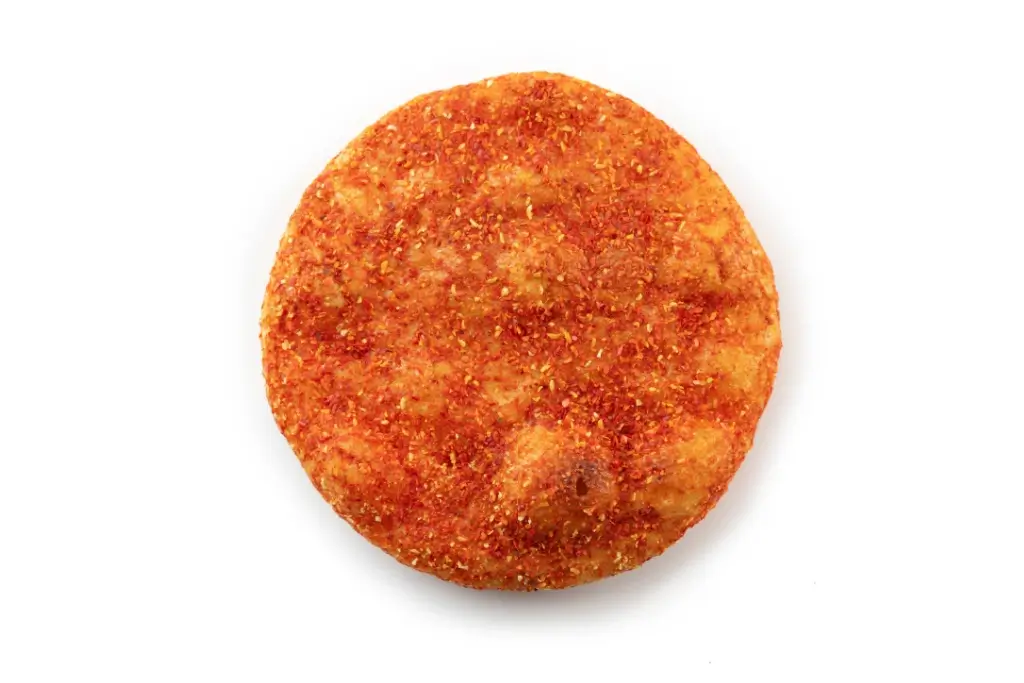
Many varieties of togarashi senbei are also available, with different spice levels depending on the chili powder or flakes used. Some versions are less spicy, while others are very hot. It’s always an excellent option for people who enjoy snacking with a peppery twist!
Hone senbei
Hone senbei, also known as “bone crackers”, is a unique and savory snack commonly served at an izakaya (Japanese pub). This snack is made from the deep-fried bones of fish or eel, often using the spine of unagi (eel) or anago (saltwater eel). The bones are deep-fried after removing the fish fillets until they become crispy and light. These crispy bones are seasoned with salt or other spices to create a yummy and crunchy treat. The fun texture and rich umami flavor make hone senbei a perfect dish to enjoy with a drink, especially a glass of Japanese sake.
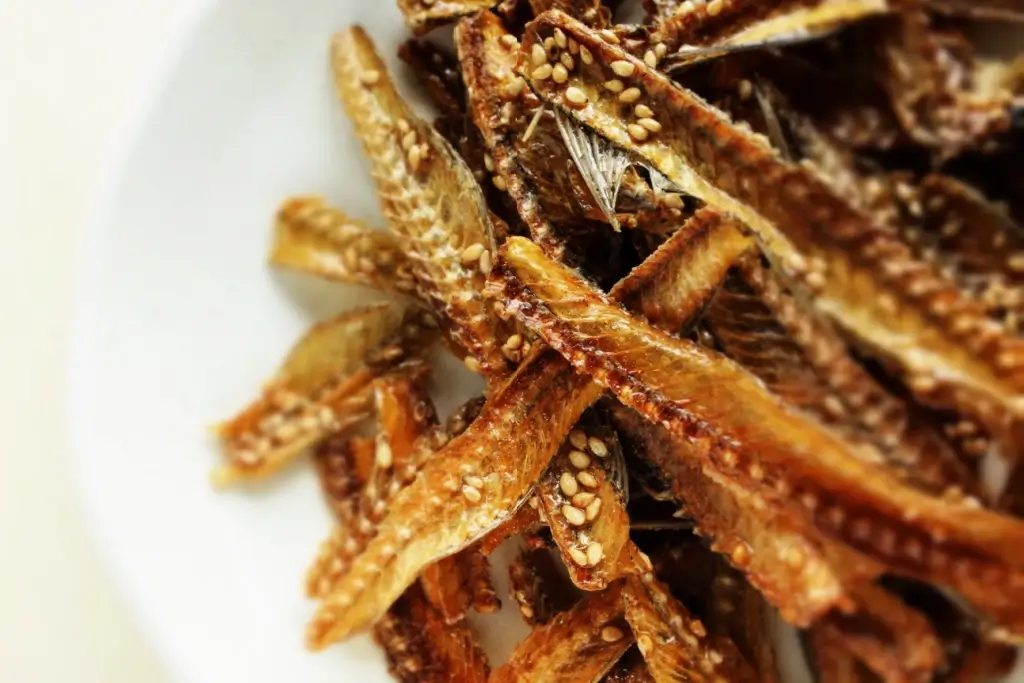
This treat is not just tasty but also offers health benefits. Made from fish bones, hone senbei is rich in calcium, making it a wholesome food choice for adding extra nutrition. You can find hone senbei in almost all izakaya in Japan, but the best ones are usually prepared fresh.
Why should I try snacks like kaki no tane?
Trying Japanese snacks like kaki no tane gives you a taste of Japan’s rich culinary traditions. These crackers are more than just food; they are a part of the culture, offering insights into Japanese creativity and history. Overall, each snack tells a unique story about the ingredients and the people who make them. Enjoying senbei with friends or pairing it with a drink adds a special touch to the experience. So, which one would you like to try the most? Share your thoughts in the comments!

Discover authentic flavors with Sakuraco
Get Sakuraco 

Discover authentic flavors with Sakuraco
Get Sakuraco 
Related Articles

Japan Christmas Traditions: Best Luxury Dinners in 2025!
Finding a memorable Christmas dinner in Japan can range from relaxed hotel buffets to refined multi-course experiences. Celebrating over dinner is considered a classic alongside other Christmas traditions, such as KFC.

Aaron and Claire Make the Best Japanese Comfort Food: Yakisoba
If you’re craving something quick, satisfying, and full of flavor, Aaron and Claire have you covered. In this video, Aaron shares how to make yakisoba, a simple Japanese stir-fried noodle dish that’s easy to cook and incredibly addictive. Forget the instant packs or greasy takeout, this homemade version is fresh, flavorful, and the kind of…
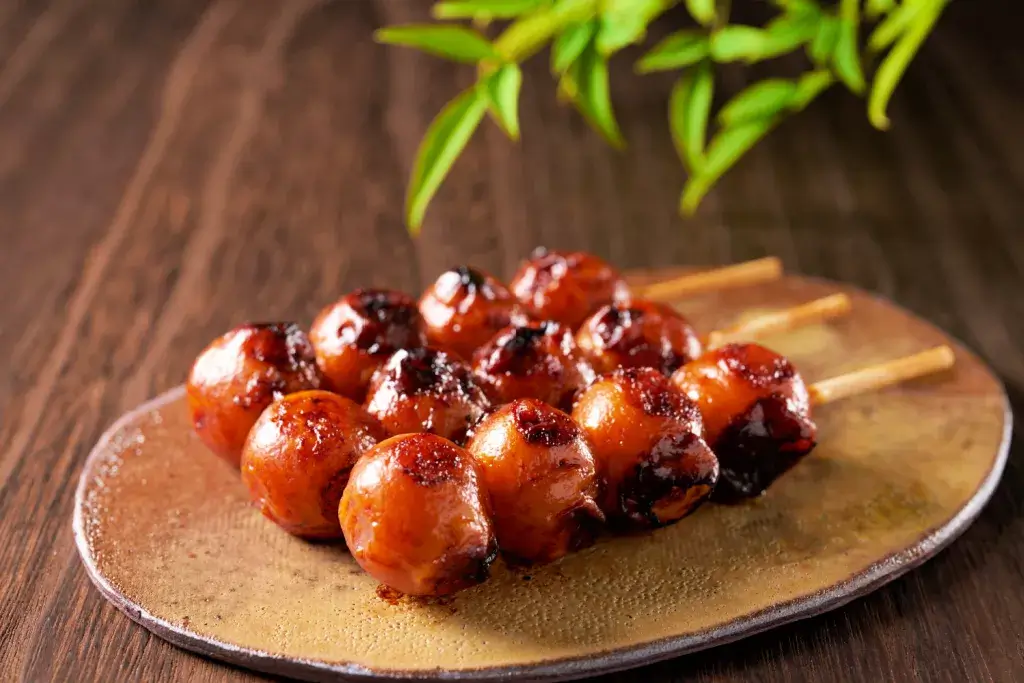
Mitarashi Dango: Japan’s Sweet and Savory Rice Treat
If you’ve ever visited Japan or seen photos of its food, you might have spotted little rice dumplings on a stick. These chewy treats are called mitarashi dango, and they’re one of Japan’s most beloved traditional sweets.

Wasanbon from Shikoku: Japan’s Most Delicate Sugar
Shikoku is the smallest of Japan’s four main islands, a peaceful region renowned for its scenic beauty and tranquil lifestyle. It’s also home to a special kind of sugar that perfectly reflects this relaxed way of life — wasanbon.



